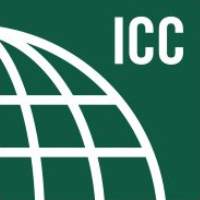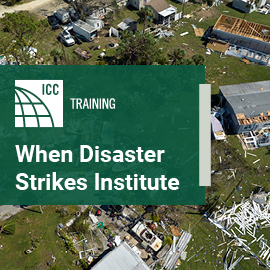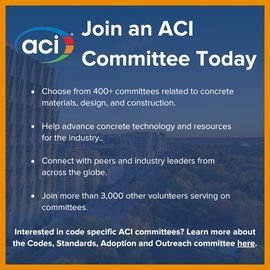
Significant changes to the 2018 I-Codes
The 2018 Significant Changes guides are available for the International Building, Residential, Fire, Plumbing, Mechanical and Fuel Gas Codes. This valuable series can help any code user save time by zeroing in on the most critical changes in the 2018 International Codes (I-Codes). The Code Council’s technical experts provide summaries, analysis and graphics for these changes making them clear and easy to understand.
2018 International Building Code
A modification to Section G103.6 (Watercourse Alteration) states that notification of a watercourse alteration should be given to all adjacent jurisdictions, not just those jurisdictions that will be affected.
The National Flood Insurance Program (NFIP) regulations specify that communities notify adjacent communities when a proposal to alter or relocate a watercourse is received. When a local jurisdiction uses International Building Code (IBC) Appendix G, the current phrasing in Section G103.6 requires judgment to determine whether an adjacent jurisdiction is affected by a proposed watercourse alteration. Only with engineering analysis it is feasible to determine whether adjacent communities are affected.
Rather than require the analysis, the 2018 IBC provision is modified to align with the NFIP regulations to require that all adjacent communities are notified. This allows each community to check on whether it is likely to be affected by the change in the watercourse.
Click here to read the full significant change.
2018 International Fire Code
A modification to Section 2403.2.1.3 (Classified Electrical Areas Around Spray Booths) states that the size of the classified area around spray booth openings is reduced to 3 feet.
The 2015 International Fire Code (IFC) required that any classified (hazardous) location for electrical wiring and equipment was within a distance of 5 feet horizontally from openings in a spray booth. This distance was reduced to 3 feet in both NFPA 70, National Electrical Code and NFPA 33, “Standard for Spray Application Using Flammable or Combustible Materials.” Therefore, this revision correlates with the referenced standards.
This reduces the size of the area where classified electrical components are required. As a result of the change in the 2015 IFC which requires monitoring of the atmosphere within the spray booth to a maximum of 25 percent of the lower flammable limit, this area should never be at or above 25 percent of the lower flammable limit. Section 2404.7.1 requires the ventilation system to be operating during all spray activities and to continue when flammable vapors are present.
Click here to read the full significant change.
2018 International Residential Code
A modification to Section N1102.2.2 (Reduction of Ceiling Insulation) states that when applying the exception for insulation in ceilings without attics, the insulation must extend to the outside of the top plate.
The International Residential Code (IRC) offers two exceptions to the prescriptive ceiling insulation requirements. The first, in Section N1102.2.1, Ceilings with Attic Spaces, recognizes the effectiveness of energy (raised heel) trusses. The increased height at the exterior wall plate allows for the full thickness of ceiling insulation throughout and the code accordingly allows a reduction in the required R-value. The second exception, in Section N1102.2.2, Ceilings without Attic Spaces, recognizes the difficulty of achieving the full required thickness of insulation in vaulted or cathedral ceilings framed with solid-sawn dimension lumber rather than trusses. In this case, the code allows a reduction in R-value to R-30 for a maximum area of 500 square feet. Depending on the Climate Zone, this is a reduction from R-38 (Zones 2 and 3) or R-49 (Zones 4 through 8).
The changes to this section for the 2018 IRC are primarily editorial. For clarification, “greater than” replaces “above” in reference to the R-30 baseline value. The concern was that the phrase “above R-30” could be read as physically above (higher) or providing a higher level of insulation. The term “greater than R-30” reflects the intent and is consistent with other provisions in the IRC. A new sentence emphasizes that in order to take advantage of this exception, the insulation needs to maintain that minimum R-value of R-30 over the entire area of the ceiling, including extending to the outer edge of the top plate at the exterior wall. Compression of the insulation at any point reduces the R-value and is less effective at conserving energy. While many code users have inferred that the intent was to maintain the R-value to the outside of the exterior wall, the code previously did not explicitly require it.
Click here to read the full significant change.
2018 International Plumbing Code
A modification to Section 716 (Pipe Bursting Replacement of Building Drains) states that the section on replacement of building sewers by pipe-bursting methods has been expanded to include replacement of underground building drains.
There could be some buildings where a building drain has to be replaced and the open-trench method is prohibitive in both cost and facility downtime. For example, a large factory building could have a long underground building drain passing under floor areas having machinery or conveyors in many locations on the floor. Dismantling and moving such equipment in order to cut a trench in the floor and excavate would be an excessive disruption. Pipe bursting is an alternative for these situations.
Click here to read the full significant change.








